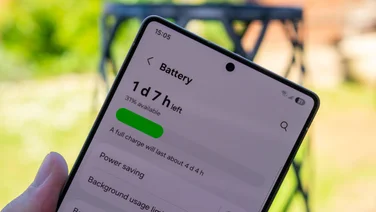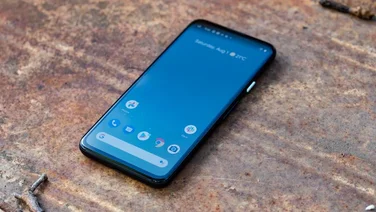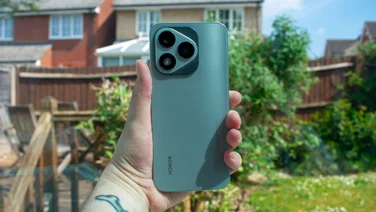To help us provide you with free impartial advice, we may earn a commission if you buy through links on our site. Learn more
































- Innovative design
- Edge-to-edge display with no notch
- Blistering performance
- Horrible software
- Mediocre camera performance
- Comparatively slow fingerprint reader
Across the world, smartphone usage has exploded in recent years, but the industry itself is stagnating. Nowadays, phones all have similar characteristics and the leaps forwards of the past have been replaced by tiny, baby steps. Vivo, the Chinese manufacturer you might have seen advertised across billboards at the World Cup this year, is here to break that trend with two groundbreaking new features.
READ NEXT: Best smartphones – our pick of the best
Vivo Nex S review: What you need to know
The Vivo Nex S incorporates a pop-up camera for selfies and an in-display fingerprint reader, which allows the screen to fill the front of the phone unlike any before it because the manufacturer doesn’t need to incorporate a notch at the top or leave space below the screen for a fingerprint reader.
The phone’s innovative design is complemented by a huge 6.59in Full HD+ display, a dual rear-facing camera, a blistering Snapdragon 845 chip and 8GB of RAM. On paper, the Nex S has all the right ingredients to challenge some of the very best phones on the market.
The catch? UK availability is scarce, the phone comes preloaded with bloatware and has an annoying Android overlay – FuntouchOS.

READ NEXT: Samsung Galaxy S9 Plus review: The dual-camera phone is now cheaper
Vivo Nex S review: Price and competition
At the time of writing it’s hard to find the Vivo Nex S from a reputable retailer. Instead, you’ll have to rely on private sellers on eBay and WondaMobile. The phone comes in two storage sizes, 128GB and 256GB and prices vary from £667 to around £800.
Even though the Nex S is unique, there’s a lot of competition to contend with at this price: the Samsung Galaxy S9+ at £769, the regular S9 at £551, the OnePlus 6 at £469, the Google Pixel 2 XL at £799, and the iPhone X at £959.
It’s worth pointing out that these flagship phones don’t offer the same screen-to-body ratio, the pop-up camera or the in-display fingerprint reader that the Vivo Nex S offers. The only other phone in the UK that has an in-display fingerprint reader is the Huawei Mate RS Porsche Design, which retails for a staggering £1,500.
READ NEXT: Honor 10 review: Honor’s flagship gains a notch
Vivo Nex S review: Design and build quality
The Nex S is an incredible-looking device and it all starts with that in-display fingerprint reader. Positioned around 1.5cm from the bottom edge, the sensor appears on your screen as a circular green fingerprint on the display. In order to preserve the battery, though, Vivo opts to only show the fingerprint pattern when you’ve woken the phone up through the power button or when it’s raised from a surface.

The performance of the fingerprint sensor is slightly slower than that of a normal fingerprint reader, but the speed hit isn’t that bad. It takes a little over a second to recognise your fingerprint and you only have to rest your finger on the screen very lightly. It isn’t quite as reliable as its rivals, though, and sometimes it takes a few attempts to unlock the phone.
It’s a great party piece but even more special is the phone’s motorised, pop-up camera, which kicks into action when you switch to selfie mode in the camera app. As soon as you do the switcheroo it emerges in about two seconds flat – fast enough to capture a quick selfie with a celebrity.

Of course, the main reason to have a pop-up camera in the first place is that you don’t need a notch to accommodate it, so the screen occupies pretty much the entire front face of the phone. In the case of the Vivo Nex S it occupies 91.24% of it, to be precise. To put that into perspective, the S9+ sits at around 84%, while the Pixel 2 XL is even lower at around 76%. That’s a lot more screen in front of you and this comes to play when you’re gaming, watching movies, or even using the phone as a satnav. If you’re wondering about the phone’s proximity sensor, that sits somewhere on the top edge of the phone’s display.
Moving onto the phone’s physical attributes, the Nex S is everything you’d expect from a flagship phone. With its curved edges and its incredible light-splitting rear panel – as you tilt the phone towards the light, bands of red, green and blue appear to stripe the rear – it has a special feel to it.

As for the size of the phone, well even with that incredible screen to body ration, it’s absolutely enormous. It measures of 77 x 8 x 162mm (WDH) – that’s around half a centimetre taller than the OnePlus 6 – and it weighs 199g. That makes it heavier than the Samsung Galaxy S9+ (189g), the Google Pixel 2 XL (175g) and the OnePlus 6 (177g).

As for ports and buttons, Vivo has conveniently placed the power button and volume rocker on the right edge, while a dedicated ‘Jovi’ button sits on the left edge. Jovi, is Vivo’s own personal assistant (more which below). On the top edge, there’s a 3.5mm headphone jack and the pop-up camera, along the bottom edge there’s a downward-firing speaker, the phone’s dual 4G SIM tray and the USB Type-C port, which supports Qualcomm’s Quick Charge 4.

Unfortunately, NFC is missing from the list of features, which means you can’t make contactless payments on your phone. There’s no IP rating, which means the Nex S isn’t water resistant and also missing are wireless charging and a microSD expansion slot. With the phone’s fast-charge capabilities and the huge 128GB or 256GB storage options the latter two aren’t huge problems, however.
READ NEXT: OnePlus 6 review: OnePlus’ most impressive smartphone
Vivo Nex S review: Display
The Nex S has a massive 6.59in Super AMOLED display, which runs at a resolution of 1,080 x 2,316. This leads to a pixel density of 388ppi, which is lower than the Samsung Galaxy S9+ at 529ppi and the Pixel 2 XL at 539ppi, but higher than the OnePlus 6 at 402ppi. However, this shouldn’t concern you, unless you’re looking to use the phone to watch VR content. It’s a perfectly sharp display when viewed from normal distances.

As for the phone’s brightness, that’s not an issue, either. Measured with our X-Rite i1 DisplayPro calibrator, I observed a maximum luminance of 417cd/m². Under direct sunlight and with Auto Brightness enabled, this figure rises increases to 567cd/m², which means it’ll be more than readable in bright sunshine. Still, it can’t compete with the Samsung Galaxy S9+’s HDR display, which is capable of peaking at 810cd/m².
Unlike some of its rivals, the Nex S doesn’t have any sRGB or DCI P3 options to choose in the phone’s display settings and it isn’t very colour accurate. Contrast is perfect, as you’d expect, but the colours are far too vivid and candy coloured.
READ NEXT: Honor View 10 review: The OnePlus 5T rival
Vivo Nex S review: Performance
When it comes to raw performance, the Vivo Nex S is no slouch. With a 2.7GHz octa-core Snapdragon 845 chip and 8GB of RAM on board, this is a phone that will churn through anything you throw at it. From the most intensive games, such as PUBG Mobile, to heavy multitasking, nothing fazes it and in the GFXBench and Geekbench 4 benchmarks, the phone performs spectacularly well.

In the graph below, the S9+, S8+ and Pixel 2 XL all perform slower and that’s all down to the fact that they run at a higher resolution than the Nex S. Note, though, that you can achieve higher frame rates on the Samsung phones by adjusting the resolution in the display settings menu.

The Vivo Nex S’ battery life is middling, as you might expect of a phone with a screen this big. It lasted 13hrs 31mins in the Expert Reviews video rundown test, lagging behind the Samsung Galaxy S9+ at 14hrs 36mins and OnePlus 6 at 17hrs 18mins.

Vivo Nex S review: Software
The Vivo Nex S’ biggest and unavoidable flaw, however, is its software, which is Android Android 8.1 Oreo overlaid with Vivo’s own launcher: FuntouchOS 4.
The UI is disorganised and filled with unnecessary bloatware. In fact, to even install Android apps through the absent Play Store, you’ll need to go away and install Google Play Services first, and this isn’t the easiest thing to do. Thankfully, the folk at XDA Developers are on hand to help and, once all the relevant bumpf is in place, at least you’ll be able to install and run your favourite apps just like on any other Android handset.

What you won’t be able to do, though, is reassign the phone’s Jovi button on the left-hand side to Google Assistant. Since Jovi is pretty useless and pressing the button by accident is all-too-easy, this is a fairly major irritation.
The pain isn’t over, though. For some reason, Vivo has locked the ability to change the default launcher. You can change it, but you need to jump through hoops to do so; you need to sign in with a Vivo account and to get a Vivo account you’ll need a Chinese phone number. There is a workaround. You can contact Vivo Support or send Vivo a message on Facebook to request a ‘Public Account’ as outlined here but, frankly, it’s all a bit of a pain.

On the plus side, the overlay as it is has a few positive quirks, such as the ability to customise the behaviour of the phone’s navigation buttons. Here, you can remove the nav bar and have three small indicators at the bottom of the phone’s display, which you interact by swiping up from the bottom edge of the phone. It’s weird at first but once you get the hang of it, it’s a rather intuitive way navigating around the OS.
READ NEXT: Apple iPhone X review: A great phone, but is Apple killing the iPhone X?
Vivo Nex S review: Camera
The pop-up camera selfie camera is an 8-megapixel, f/2 effort while on the rear the Vivo Nex S has a dual camera setup comprising a 12-megapixel f/1.8 snapper with phase detect autofocus (PDAF) and a secondary f/2.4, 5-megapixel camera that serves as a depth sensor for blurred background portrait photographs. The former is equipped with both quad-axis optical stabilisation and electronic image stabilisation for smoothing out video clips.

There are some interesting software features here, too. The first is that you can ‘boost’ the resolution up to 24 megapixels through interpolation. This doesn’t actually add any extra detail to shots but the resulting images to look a little crisper and more punchy, presumably through sharpening.

^ The Vivo Nex S’ 24M mode uses interpolation, which doesn’t add any more detail to scenes but shots do have a little more presence
The phone’s “AI” mode, meanwhile, aims to improve the overall picture by automatically recognising what you’re pointing the camera app and adjusting the settings appropriately. Shots captured in this mode were a touch too vibrant and over-saturated for my liking but for sharing on social media they work fine.

^ The Vivo Nex S’ AI mode produces images that look dramatic, but are hugely over-saturated
As for the overall quality of the rear-facing cameras, the detail they capture and the post-processing that happens under the hood is good but no match for flagship phones like the Samsung Galaxy S9+ or the Pixel 2 XL.
As you’ll be able to see from the shots below (cropped into around 300%), the Samsung Galaxy S9+’s is able to capture a lot more detail. The brickwork and roof tiles are noticeably softer in the Vivo’s photographs – there’s simply no competition.

^ The Vivo Nex S produces noticeably softer photos than the Samsung Galaxy S9+ in outdoor shots
In our low-light still-life test, the Vivo Nex S, unusually, performed much better. The image below is, perhaps, less colour accurate than the S9+’s, but as far as noise goes, the Vivo compares quite well with the Samsung.

^ Vivo Nex S vs S9+ low-light: The Nex S’ photo is a touch warmer than the S9+’s but noise is handled well
It’s a similar story with the 8-megapixel selfie camera. This produces acceptable results but when compared with its rival, shots look over-saturated, unnatural and rather soft.

As for video, the phone can shoot up to 4K (3,840 x 2,160) at 30fps with no option to record at 60fps. The good news is that the video stabilisation works remarkably well, and was able to smooth-out video to an impressive degree, even when walking and running with the phone in my hand.
READ NEXT: Google Pixel 2 XL review: The supersized Pixel 2
Vivo Nex S review: Verdict
The Vivo Nex S is a unique smartphone. It looks great, it’s built beautifully, has the best processor you can currently find in a phone and a huge, truly edge-to-edge display.
The problem? It’s far from perfect. The camera is sub-par by modern-day flagship standards, and its software isn’t up to scratch, either.
In short, there’s plenty to like here. It’s fabulous in many ways, but I couldn’t recommend it in front of the 2018’s big hitters.





